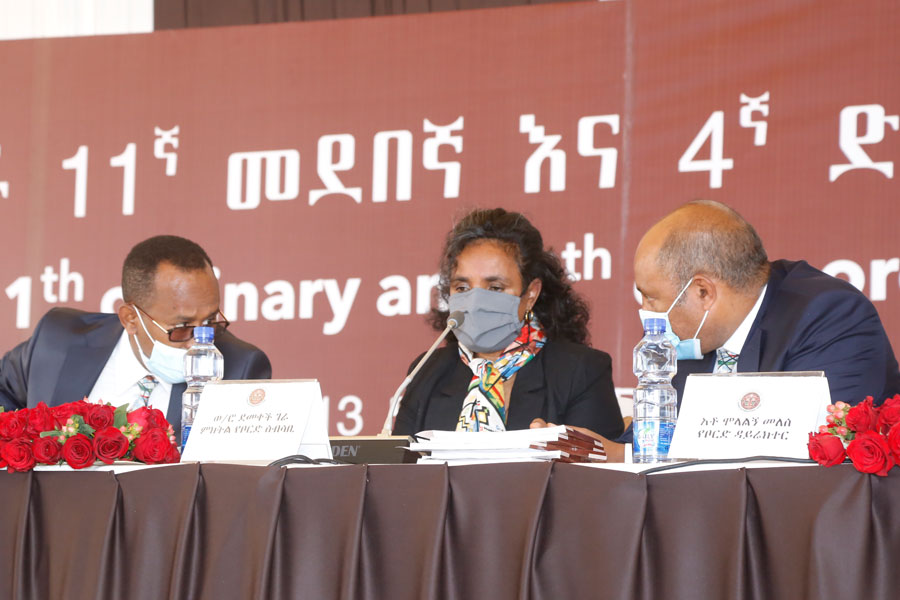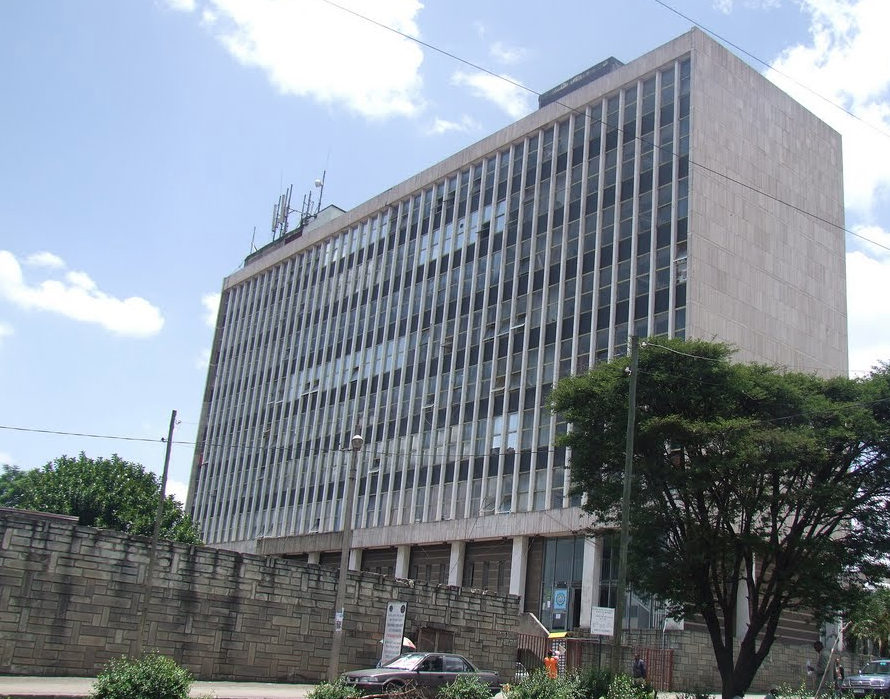
Fortune News | Jan 16,2021
Bunna Bank delivered robust performance on key financial parameters from its operation last year, including profitability, asset turnover, and financial leverage.
Industry analysts see these figures not merely representing an impressive balance sheet; they also shed light on the Bank’s potential for future growth, a crucial factor in an industry dominated by banking titans such as Awash, Abyssinia, and Dashen.
The strong performance of Bunna Bank comes against the backdrop of substantial growth in Ethiopia’s private banking industry, year-on-year. Its expansion offers the ground for embracing technology for financial solutions, a factor highlighted by the rapid rise of smaller banks such as Enat Bank, a third-generation bank with a fast growth record last year.
However, industry observers signalled a cautious approach, particularly in monitoring profitability indicators, including return on assets, deposit-to-loan, equity and managing cost-income ratios.
Despite these cautions, Bunna Bank posted a net profit margin of 17.6pc in the fiscal year 2021-22, marking a rise from the previous period.
However, with increased competition in the banking industry and a persistent slowdown in business, experts urge Bunna Bank to maintain its proactive stance. The Bank needs to continue strengthening its risk management structures, enhancing its digital capabilities, and adapting to regulatory changes to solidify its position in the market.
The profitability surge, which translated into net profits of 881.3 million Br, a jump of 31.4pc from the prior year, was a welcome development for over 14,000 shareholders, some of whom met in November last year at the Millennium Hall on Africa Avenue (Bole Road).
One of these shareholders, Sewale Abate, said his share returns were slightly lower than in the prior years.
“Shareholders expect more returns from their investment,” he told Fortune.
He urged the Bank to strengthen its marketing efforts to prevail over its peers.
Incorporated 14 years ago with 175 million Br paid-up capital raised from 8,000 shareholders, Bunna’s shareholders resolved to increase its capital to six billion Birr before 2026. Its capital grew by 32.23pc to 3.31 billion Br, with reserves reaching 4.5 billion Br. The capital adequacy ratio (CAR) slightly increased to 18.9pc from 18.39pc, 1.9 percentage points higher than the industry average.
Industry analysts attributed this growth to Bunna Bank’s effective cost management and commendable efforts to convert revenues into profits.
The Bank witnessed a significant rise in interest income, fees, commissions, and foreign exchange gains. Interest on loans, advances, treasury bills, and other deposits increased by 41.8pc to reach 3.67 billion Br. The income from fees and commissions grew by 23.4pc to hit 710 million Br, while gains from foreign currency dealings went to 82.09 million Br, an amount representing half for the bigger private banks.
Abdulmenan Mohammed, a London-based financial statement analyst, applauded the efforts of Bunna Bank’s executives in driving revenue growth.
This growth is also reflected in Bunna’s share earnings, which increased to 298.4 Br from 293.2 Br, positioning Bunna Bank favourably among its peers. Its asset growth, loans, and deposits outpaced most of its peers, highlighting a strong growth trajectory.
However, Bunna Bank’s profitability was somewhat lower than some of its competitors. Its return on assets (RoAA) was 2.6pc, a solid figure but trailing behind Nib, Zemen, and Berhan.
Bunna Bank’s balance sheet exhibited an asset growth of 31.4pc and a surge in loans and advances by 41.6pc. Although lagged behind Abay bank, its deposit growth reached a total of 27.18 billion Br, an increase of 32.53pc. It was slightly higher than Berhan Bank’s deposits, totalling 26 billion Br but was still lower than deposits mobilised by Abay Bank (32.4 billion Br).
A significant strength for Bunna Bank is its asset turnover, standing at 14.6pc, underscoring its efficiency in using assets to generate income. The Bank’s financial leverage of 6.73 points further indicates its strategic approach to using debt to finance assets, aimed at maximising shareholders’ value.
Alemayehu Sewagegen, chairman of the board, said with prudent lending practice and the spread of the sick loans reaching 4.1pc share of the total 25.85 billion Br, the percentage of non-performing loans (NPL) remains below the five percent precautionary level. The Bank has improved provision for impairments of loans and other assets, down by 24pc to 123.78 million Br.
The loan-to-deposit ratio of Bunna Bank increased by 93.4pc from 87.6pc the previous year, 3.6 percentage points lower than the average for the 29 banks, including the CBE. Oromia International Bank, with a 71.9pc ratio, and Abay and Berhan, with 82pc, posted the lowest ratios last year. Industry leaders such as the Bank of Abyssinia and Awash Bank posted 91pc and 86pc, respectively.
“The level Bunna reached could cause a liquidity problem,” warned Abdulmenan.
Bunna Bank’s President, Mulugeta Alemayehu, argued that the loan-to-deposit ratio is a crude indicator; other measurement tools, such as liquidity coverage and net stable funding ratios, should be considered in analysing the Bank’s position in the industry.
Bunna Bank’s growth trajectory points to the growing role of Ethiopia’s private banking industry, driven by increased competition to mobilise deposits and adaptation of technology. The industry mobilised a little over two trillion Birr in the three quarters of the current fiscal year, averaging 69 billion Br for the 29 banks in operation. Until February this year, the industry held outstanding loans and advances of 1.8 trillion Br, short of 100 billion Br from the outstanding deposits during the same period.
Bunna Bank’s prospect hinges upon its executives’ ability to maintain the growth momentum and continue its digital transformation journey. If Bunna Bank successfully capitalises on these opportunities, it will likely continue thriving in the ever-evolving banking sector, proving itself as a force to be reckoned with, analysts believe.
In banking, it is not just about amassing assets or profits but also about creating value for stakeholders and maintaining a sustainable growth trajectory. Bunna Bank’s performance has demonstrated that its executives appear to have understood this principle.
The President said the last operational year focused on reorganising banking and IT areas had been made to sustain the growth momentum. The move is also expected to improve the operational efficiency and effectiveness of the Bank.
Mulugeta served at the state-owned Commercial Bank of Ethiopia (CBE) for over 20 years before assuming his presidency at Bunna Bank, the fourth CEO since its incorporation in 2009. He studied accounting and business administration at Addis Abeba University.
Mulugeta concurred with the analyst’s observation that his management needs to monitor the growing expenses closely.
Adjusted wages soared by 57.6pc to 1.18 billion Br, and branch expansion to 343 increased costs. Interest on deposits surged by 45pc to 1.3 billion Br. Other operating expenses grew to 738.69 million Br, jacking up by 36pc, 4.6 percentage points higher than its profit growth.
PUBLISHED ON
May 20,2023 [ VOL
24 , NO
1203]

Fortune News | Jan 16,2021

Viewpoints | Apr 10,2023

In-Picture | Jul 08,2024

Radar | Feb 24,2024

Fortune News | Jul 29,2023

Advertorials | May 23,2025

Agenda | Jan 18,2020

Radar |

Radar | Feb 26,2022

My Opinion | Nov 04,2023

Dec 22 , 2024 . By TIZITA SHEWAFERAW
Charged with transforming colossal state-owned enterprises into modern and competitiv...

Aug 18 , 2024 . By AKSAH ITALO
Although predictable Yonas Zerihun's job in the ride-hailing service is not immune to...

Jul 28 , 2024 . By TIZITA SHEWAFERAW
Unhabitual, perhaps too many, Samuel Gebreyohannes, 38, used to occasionally enjoy a couple of beers at breakfast. However, he recently swit...

Jul 13 , 2024 . By AKSAH ITALO
Investors who rely on tractors, trucks, and field vehicles for commuting, transporting commodities, and f...

Sep 13 , 2025
At its launch in Nairobi two years ago, the Africa Climate Summit was billed as the f...

Sep 6 , 2025
The dawn of a new year is more than a simple turning of the calendar. It is a moment...

Aug 30 , 2025
For Germans, Otto von Bismarck is first remembered as the architect of a unified nati...

Aug 23 , 2025
Banks have a new obsession. After decades chasing deposits and, more recently, digita...